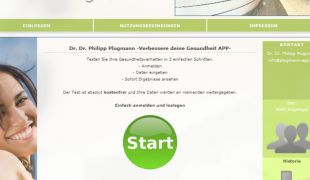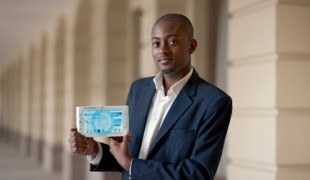- 4334
- 279
- 1
- 1
- 0
- Help Ukraine
About the solution
Catherine Wong, from Morristown, New Jersey, invented a cellphone that offers cardiac care to patients in developing countries when she was 17 years old.
The invention also operates as a portable electrocardiogram machine, and is able to measure a user’s heart activity and then in real-time, using Bluetooth wireless signals, and then transmit that information to a doctor located anywhere in the world.
Catherine came up with the idea, and built a workable prototype out of basic cellphone materials anyone could purchase at Radio Shack.
The teen is very interested in making low-cost medical tools for the developing world — so much so that she built a stethoscope that could transmit data through a cellphone when she was 16.
"That was successful enough that I decided that I wanted to see what other kinds of devices could be successfully ported over to a mobile phone platform," she said. "The ECG was the next logical step."
But once she dove in, Catherine realized she knew a lot less about electrical engineering and Java programming than she needed. "I knew what the endpoint was, but I had no clue how I was going to get there."
She turned to a physics teacher, who let her borrow equipment and talked through the many problems with her. After months of building, testing and failure, she came up with a working ECG that connected to a cellphone using Bluetooth wireless signals. The heart rhythms are displayed on the phone's screen, thanks to a Java app that she wrote.
This gadget won the NPR’s "Joe’s Big Idea Contest". A judge on NPR’s panel, Elizabeth Nadel, who is also the president of Brigham and Women’s and Faulkner Hospitals, stated, "it is a leapfrog approach that bypasses standard pieces of medical equipment that are expensive and not readily available to these populations."
With the help of mentors Catherine come in contact with since winning the contest, she hopes to make her device smaller, less expensive, and durable so that it can become a more immediate reality for people in developing countries. She told NPR, "That's who I aimed the project at, and that's who I'm working for".
Watch the video: https://www.youtube.com/watch?v=ooehCTUEg_s
Adapted from: http://www.takepart.com/article/2012/09/08/cellphone-measures-heart-acti...
This solution shall not include mention to the use of drugs, chemicals or biologicals (including food); invasive devices; offensive, commercial or inherently dangerous content. This solution was not medically validated. Proceed with caution! If you have any doubts, please consult with a health professional.



 en
en